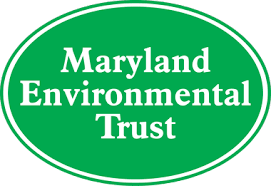Hedging their Best at Hedgeapple Farm
Hedging their Best:
The Jorgensen Family Funds the Business, Science, and Ecology of All-Natural Beef at
Hedgeapple Farm
American log cabin heritage, Danish animal husbandry neatness, scientific production
management, and environmental land and water preservation, these genetic strands braid
together in the quadruple helix of Hedgeapple Farm, a scenic and efficient beef cattle minispread
tucked away on the Buckeystown Pike just south of sprawling Frederick. Three hundred
head of Black Angus graze on the same number of fenced, pastured acres, rounded out with 100
acres of hay, and a private high school and corporate quarry and asphalt plant as neighbors.
“Here at Hedgeapple, we like to show how combining sometimes seemingly separate
parts can create a profitable, sustainable, and high value-added beef operation that sells direct to
local tables,” muses John S. Jorgensen, Sr., President of the Jorgensen Family Foundation. His
father acquired the farm in 1956, and the foundation donated a now 20 year-old conservation
easement to the Maryland Environmental Trust in 1997.
Dr. Scott M. Barao, Ph.D., Executive Director of the foundation, shares and helps shape
the Jorgensen vision based on his experience in the scientific management of beef cattle at the
University of Maryland’s research farm on the Wye River. Together they form a tag team of
persuasive personalities and data-driven decisions. Barao adds, “Hedgeapple may be unique in
the U.S. and possibly the world – a suburban working beef operation that welcomes the public
while testing new ideas and educating the next generations of beef growers. We sell the beef, but
we give freely of our wealth of experience.”
Together with Jack (John Jr.) Jorgensen, Barbara Jorgensen, Doug Selby, and resident
farm manager Jay Fulmer, the Hedgeapple leadership, staff and associates also share their
supply-side lessons from the school of hard knocks. Barao said, “For a while, we tried the
traditional market path of Black Angus growers – wholesaling the best beef in the world first to
high-end restaurants and then a local grocery chain. But between domestic pricing pressure and
large-operation overseas competition, we decided to keep and increase the value we add with our
true grass-fed, natural beef, and build local relationships – local families, local farmers, and local
processors.” Jorgensen adds with a wry smile, “We are a nonprofit, but we are for covering our
costs and making enough to plow back into the foundation and our education outreach of
trainings, seminars, and shared research.”
In a cook’s (or perhaps griller’s) tour on a steamer of an August morning, Barao points
out the seamless world of sustainable resources and sustainable beef. “We steward a mile of rich
bottomland Monocacy River bank with a fenced, wide riparian buffer. Our herd waters at fixed
and portable tanks that also prevent worn cattle paths and erosion. They love the sweet grasses
here in the spring, and in the autumn the higher ground hay we grow uphill across the road.” A
sleek cud-chewing cattle cluster cools contently in the shade, offering hefty mute testimony to
this seasonal regimen.
Think cows, naturally think country. But local here also means local inner city people.
Barao explains that “For a long time, we had to ship our cattle to Pennsylvania for custom
carcass processing that met our high standards – but that cost more time, transport, fuel, stress,
and pollution. Bad for business, bad for the environment. Five years ago we decided to move to a
newly-established processor off Pennsylvania Avenue in Baltimore, and we are now their
second-largest customer, supporting good paying jobs with a future. They provide us with
beautifully wrapped prime cuts that we proudly showcase in our restored and repurposed log
cabin, where shoppers can select their favorite entrees while learning how to prepare new
recipes. It’s a win for many Marylanders.”
All of this adds up to growing beef, growing recognition and reputation. In 2010,
Hedgeapple became the first “Certified Agricultural Conservation Steward” farm in Frederick
County. Beef growers and their organizations know of and seek out the Foundation’s advice and
experience. Bill Leahy sensed this success in 2015. “I had just started as Director of the
Maryland Environmental Trust, and went out to learn how to monitor an MET easement at
Hedgeapple. John and Scott’s enthusiasm and dedication makes them a great example of how
Marylanders are preserving the open space of Maryland for many old and new best reasons. We
are proud in MET’s 50th Anniversary Year to highlight and celebrate the people and the domestic
and wild plants and animals of Hedgeapple.”
So what is a hedgeapple? Neither horse apple nor cow pie, it’s the common name of the
fruit of the Osage Orange, a sturdy North American native of a small region of Texas and
Oklahoma. Somewhere between a large bush and a small tree, Osage Orange came East in the
mid-1800s as a green fence (before barbed wire) to separate pasture from field, similar to the
hedgerows of Europe. The fruit, like a walnut, resembles a large, pebbly-skinned green apple.
Hedgeapple - the name of the farm reflects the philosophy. Natural, beautiful, sustainable, useful,
beneficial, practical, economical. And that just makes common cattle sense.







